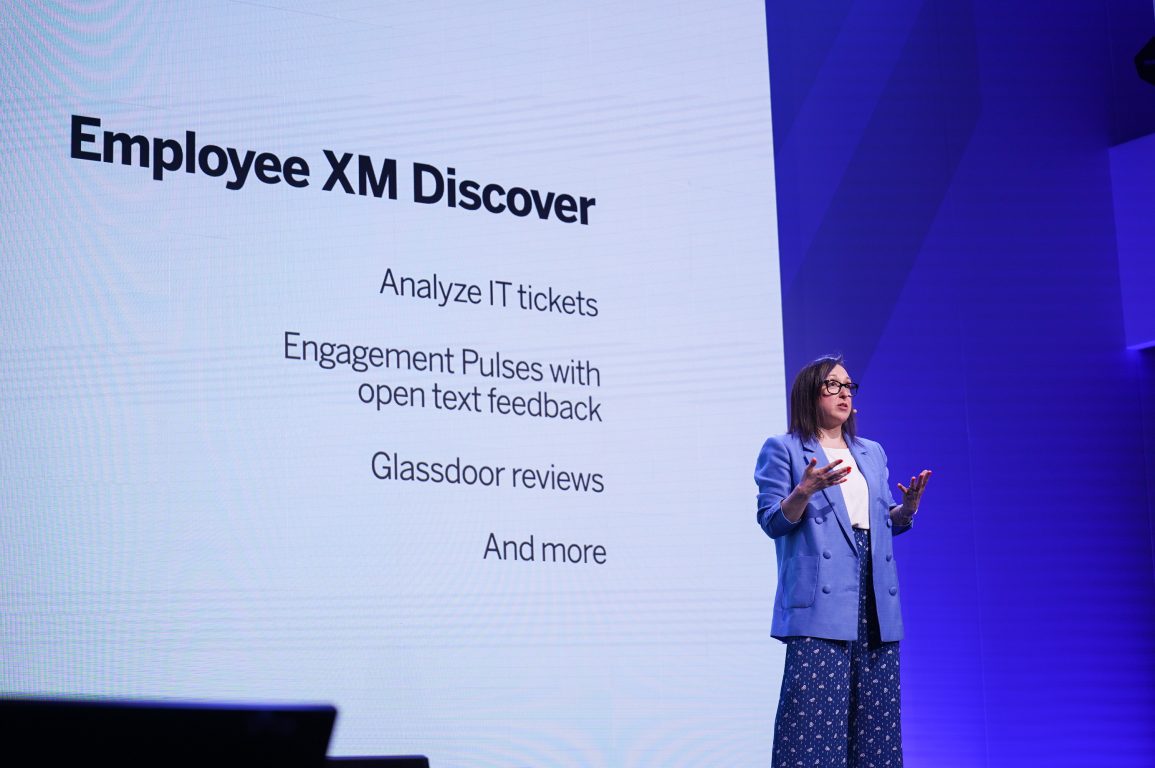Find out all the tech insights from Qualtrics’ recent X4 event in London.
Employees expect action to be taken based on their feedback.
It's time for HR to step up, and embrace real-time, continuous listening, according to Qualtrics executives.
Find out the future of employee experience tech.
Customer experience needs to be “much more reactive” when it comes to fixing problems, shares Sally Winston, director of EMEA solutions at Qualtrics.
She sat down with UNLEASH for an exclusive interview at Qualtrics’ recent X4 conference in London.
When employees share their feedback with their employer, HR teams don’t need to spend so long fact checking the themes and discussing the findings.
Instead, they need to follow the lead of customer experience teams and quickly take action to fix the issues employees are talking about.
There is a real demand from employees for new “more reactive, responsive” approaches, she added.
They need employers to move beyond annual listening surveys, and to make radical changes.
Qualtrics’ chief customer officer Donnchadh Casey agrees. At X4 in London, he told UNLEASH: “The world is changing much quicker than once a year conversation where you get the results two, three months later”.
Biannual or quarterly surveys won’t solve the problem. This is because they fatigue employees – they have barely seen the results of the previous survey before they are being asked to share their thoughts again.
Plus, it leaves little time or space for HR to show they are actually listening and taking action based on feedback – “with more feedback also comes the expectation to go and act in the moment”, it is “setting the wrong expectations with employees”, notes Casey.
The solution is for HR to learn from marketing and customer-focused teams and lean into continuous listening and real-time feedback.
Qualtrics has been working for a long time on finding ways to “collect unstructured data from across the organization” in order to take the pulse of employees.
Casey explains this means “you’re not interjected in people’s day by formally asking – you’re informally looking at what they’re talking about” with colleagues on Slack or Microsoft Teams channels.
The aim is to “find less intrusive ways to engage with employees so that you understand who their opinion might be changing over time as the world changes,” adds Casey.
Examples of Qualtrics tools that leverage these real-time insights are Manager Assist, Cross XM, XM for the frontline, and XM Discover.

Qualtrics’ Sally Winston on stage at X4 in London.
This idea of continuous listening may seem a bit like George Orwell’s 1984. But Casey and Winston were both quick to reassure UNLEASH that this isn’t the intent.
The data is “stuff that’s publicly available anyway,” says Casey.
Qualtrics wants its technology to help “customers think differently about how they use that data that’s already available to them.”
Winston added that it is about picking out general themes and trends.
“The purpose is to capture sentiment, mood, tone and key themes at a high level. It is not about saying, these individuals are talking about these particular topics in this Slack channel”, she notes.
The anonymity and confidentiality piece is key to Qualtrics. Winston shares: “Continuous listening requires a mindset shift for companies – depending on the industry, the work, the demographics, and the workforce, and some will be much more open to it than others.”
Ultimately, success comes from transparency.
According to Winston, employers need to be clear with workers that they are collecting this type of data, and then, most importantly, how they are using it.
“It’s the same as with survey data, when you do something [based on that data] you should tell people that you’re making a positive change [in response to what] we’ve heard”.
Ultimately, “everybody will get to a place where they accept that this is a really valid way of sharing your views and that companies [are] doing positive things with that information,” Winston said.
With the rapid pace of emerging tech – particularly within generative AI – Qualtrics’ leadership say the company is looking to see how it can add to its solutions.
“We are focused on the experience of managers and how they digest data, how they use data to drive action,” Winston said.
“Our product team are working constantly on thinking about how they evolve that”.
Casey also spoke about the challenges Qualtrics is thinking about.
He notes that as an external tool, it is tricky to use ChatGPT from an employee experience perspective: “There’s an extra layer of confidentiality aligned with employee data.”
He says Qualtrics is “leveraging ChatGPT-like functionality” into its secure products, with a view to help with data interpretation and analysis.
“We haven’t finalized exactly what this is going to look like.”
He said the goal is to incorporate generative AI and use it to field queries, to help managers get more intelligent insights – and quicker.
Talking generally, Casey adds that “our own AI platform is getting better and better all the time at interpreting emotion, sentiment intensity and [helping] to surface stronger insights – those models are getting smarter and smarter”.
Qualtrics says AI has long been a focus for the company’s customer experience management software solution.
And will continue to be a priority.
“We’re getting much closer to having a very strong offering in the employee experience space,” Casey said.
“It is going to be incredibly strong, and we’re going to continue to incrementally improve it over the coming quarters.”
Get the Editor’s picks of the week delivered straight to your inbox!

Chief Reporter
Allie is an award-winning business journalist and can be reached at alexandra@unleash.ai.
"*" indicates required fields
"*" indicates required fields